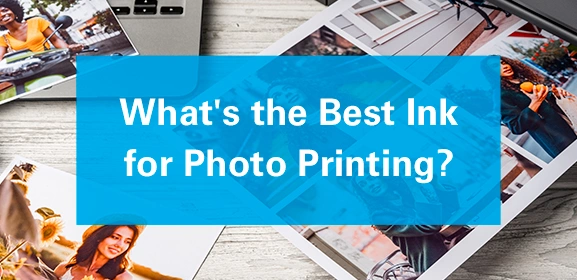-
Consumables
- Printers
- Industries
- Innovation
-
Partners
G&G Partner ProgramCo-Innovating Tomorrow Read More >
- About Us
-
Contact Us
Inkjet printers using ink cartridges have been a popular choice for decades. This trend, however, began to shift in 2015 with the introduction of Epson's EcoTank line. Following Epson, Canon launches its MegaTank printers in 2016, and in 2109, HP joined the movement with its SmartTank printers.
With both new and traditional options in the market, which type of printer suits your needs best? We provide a detailed comparison between these two printer types to help you make the right decision.

1. Cost-Effective Printing
Instead of relying on traditional ink cartridges, these printers feature a high-capacity built-in ink tank to feed ink to the printhead. A single refill ink bottle can produce thousands of pages, significantly reducing the cost per page. Ink tank printers are becoming popular especially among users with hgih-volume color printing needs.
2. Transparency and Monitoring
The transparent ink tank enables users to easily monitor ink levels with a quick glance. This transparency ensures timely refills, preventing unexpected interruptions during printing tasks.
3. Sustainable Printing
Ink tanks printers are better for the environment too. The built-in ink tank system allows users to refill the ink when needed. This eliminates the need for the production of various plastics parts used in inkjet cartridges, reducing waste and contributing to a more eco-friendly printing experience.
1. Higher Initial Cost
While ink tank printers offer long-term cost savings, the initial investment can be higher than that of ink cartridge printers. The cost will be quickly offset for frequent users, but for users with moderate printing needs, ink cartridge printers are more suitable because their initial setup costs are lower and the recurring costs remain reasonable.
2. Potential Mess
Refilling ink tanks with ink bottles requires a steady hand to avoid spills and stains. Users must be careful during the refill process to prevent any mess.
3. Printhead Clogs
Refilling ink may adopt air into the tank. The exposure of ink to air can potentially cause printhead clogs, affecting print quality. Regular maintenance is necessary to prevent complications arising from prolonged ink exposure.
1. Ease of Use
Ink cartridge printers are user-friendly and straightforward. Printer cartridges can be easily replaced without the need for any additional equipment or processes, making them a good choice for those who prefer a hassle-free experience. Many users appreciate the convenience of simply swapping out ink cartridges without the potential mess associated with ink tank refilling.
2. Familiarity and Compatibility
Ink cartridges are a well-established technology, ensuring compatibility with a wide range of printers. Users can find cartridges for various printer models easily, providing convenience and accessibility.
3. Consistent Print Quality
Ink cartridge printers can deliver consistent print quality. The sealed nature of ink cartridges helps maintain ink integrity, ensuring stable printing performance.
1. Higher Cost per Page
Replacement cartridges are more expensive compared to refill ink, due to higher cost of manufacturing. The frequent replacement of cartridges can add up, leading to a higher cost per page compared to ink tank printers. This running cost might be a concern for users with high printing volumes.
2. Limited Transparency
Unlike ink tanks, ink cartridges are opaque, making it impossible for users to directly monitor ink levels. Users have to check ink levels via their computer or printer. This lack of transparency can lead to unexpected interruptions during critical printing tasks.
3. Environmental Impact
The disposal of used ink cartridges contributes to electronic waste. What’s more, waste ink can pollute water and soil. Fortunately, certain cartridge manufacturers, such as G&G, are actively working to recycle and remanufacture cartridges to address these environmental concerns.
Both ink tank and ink cartridge printers have their own benefits and drawbacks. The choice between them depends on your priorities, budget, and printing habits. Consider the pros and cons carefully to find the printer that meets your specific needs.






